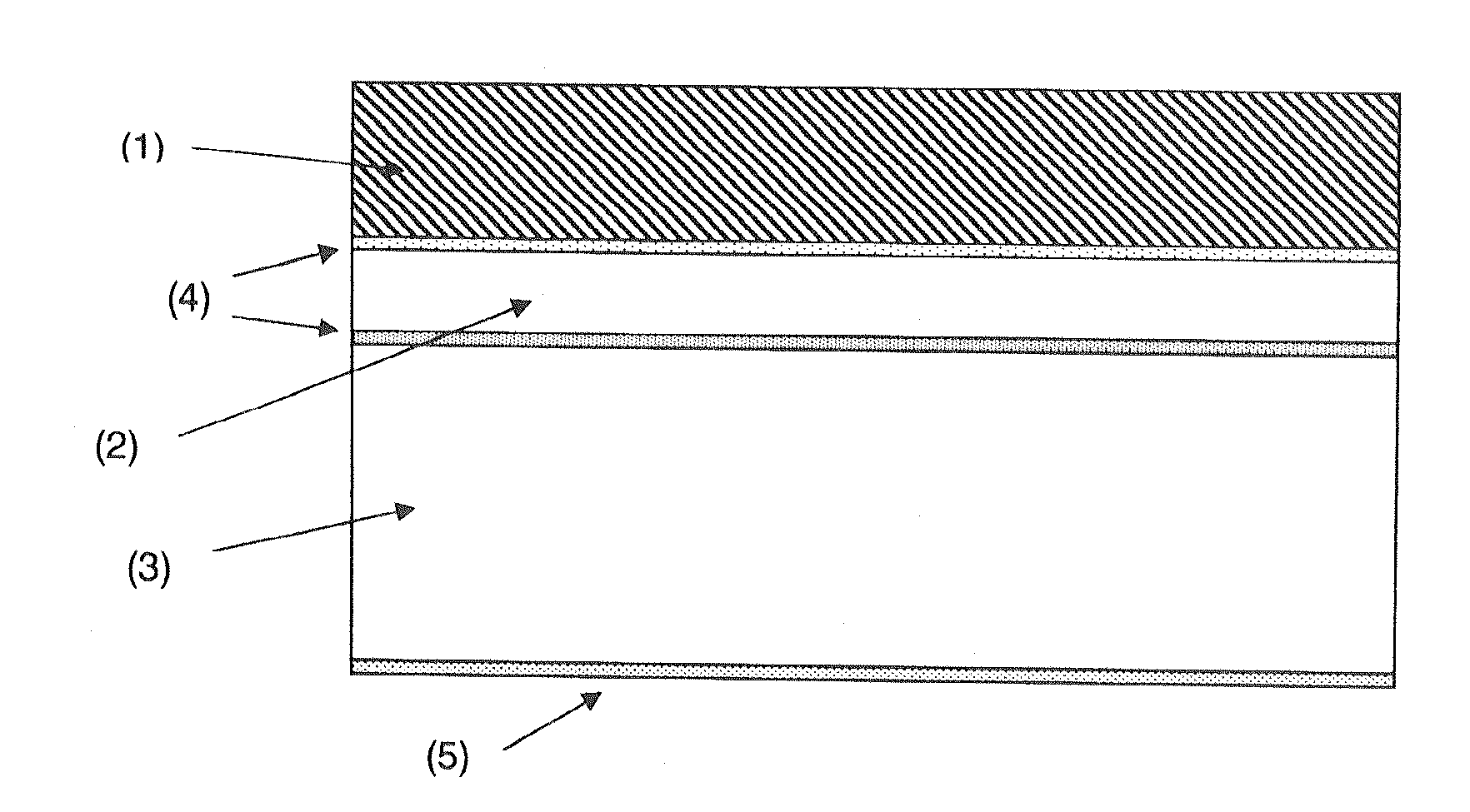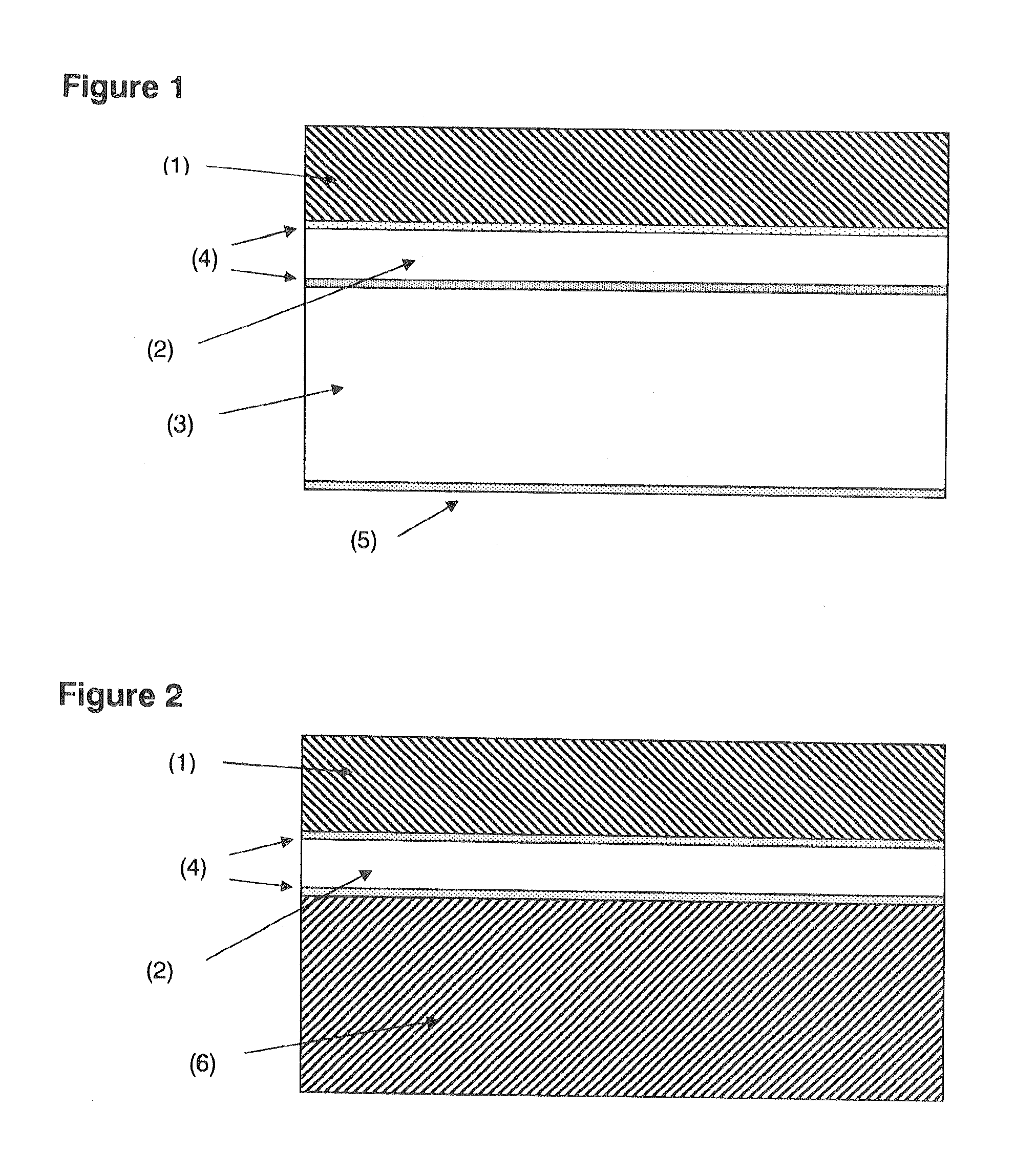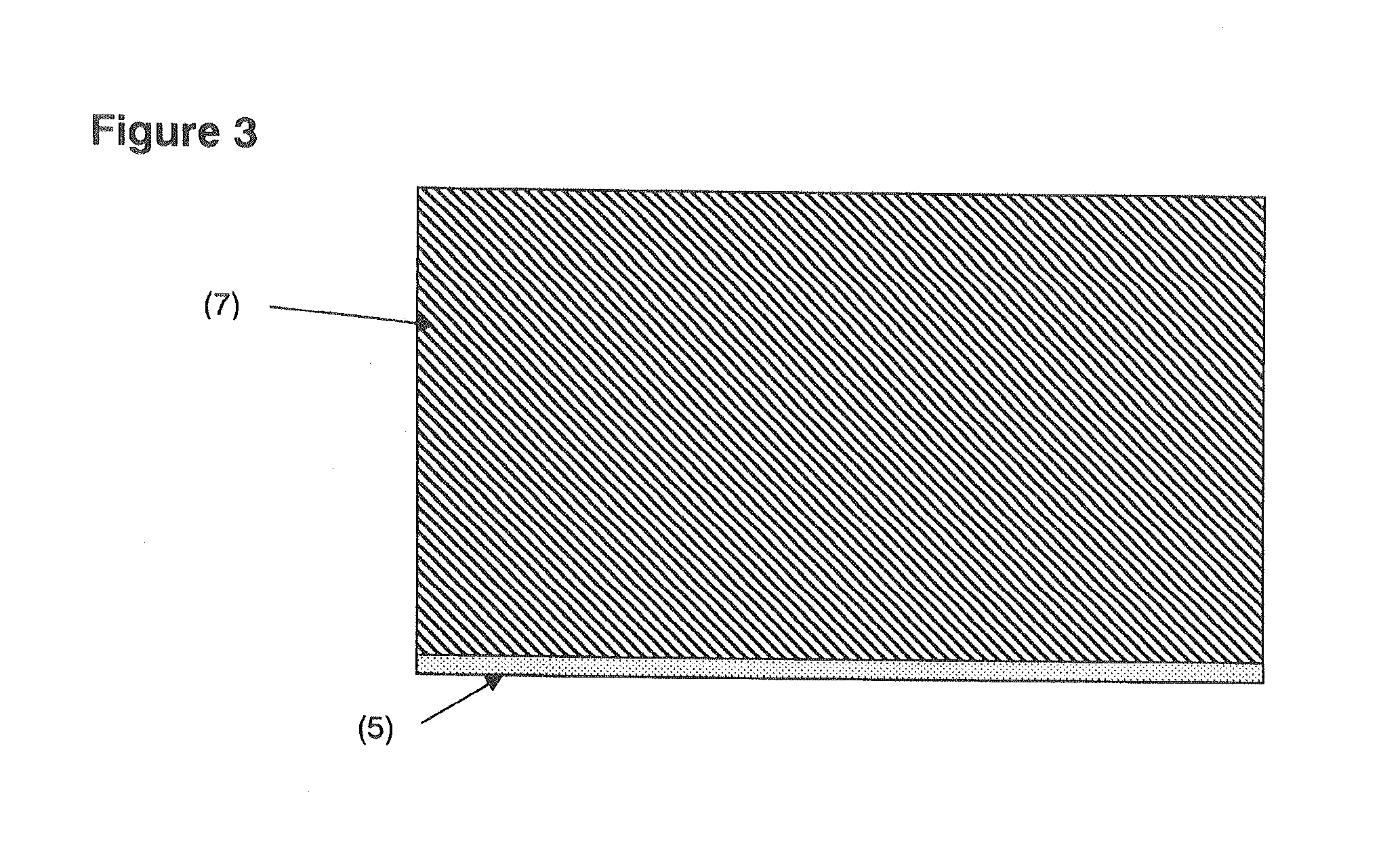White, biaxially oriented polyester film with a high portion of cyclohexanedimethanol and a primary and secondary dicarboxylic acid portion and a method for its production and its use
- Summary
- Abstract
- Description
- Claims
- Application Information
AI Technical Summary
Benefits of technology
Problems solved by technology
Method used
Image
Examples
examples
[0093]Method: The raw materials were mixed and extruded in a twin-screw extruder by Japan Steel Works with degasification. In the extruder zones and in the melt line the temperature was 275° C. max. The throughput was 2000 kg per hour. The melt was extruded through a flat die (temperature 275° C.) onto a cooling roller (30° C.) and was subsequently stretched at 105° C. by the factor 3.2 in longitudinal direction, and then stretched at 110° C. by the factor 3.2 in transverse direction.
[0094]The film was then heat set at 222° C., wherein in the last zone, 2% relaxation in transverse direction were adjusted. In the two following setting zones, 190° C. and 150° C. were adjusted and the relaxation here was another 3%. The total residence time in the heat setting was 15 s.[0095]R1=Polycyclohexanedimethanol-terephthalate-isophthalate, type DURASTAR® DS2000 (manufacturer Eastman, USA), SV=980, IPA-content ca. 26 mol-%, TA-content ca. 74 mol-%[0096]R2=Polycyclohexanedimethanol-terephthalate-...
PUM
| Property | Measurement | Unit |
|---|---|---|
| Temperature | aaaaa | aaaaa |
| Fraction | aaaaa | aaaaa |
| Fraction | aaaaa | aaaaa |
Abstract
Description
Claims
Application Information
 Login to View More
Login to View More - R&D
- Intellectual Property
- Life Sciences
- Materials
- Tech Scout
- Unparalleled Data Quality
- Higher Quality Content
- 60% Fewer Hallucinations
Browse by: Latest US Patents, China's latest patents, Technical Efficacy Thesaurus, Application Domain, Technology Topic, Popular Technical Reports.
© 2025 PatSnap. All rights reserved.Legal|Privacy policy|Modern Slavery Act Transparency Statement|Sitemap|About US| Contact US: help@patsnap.com



